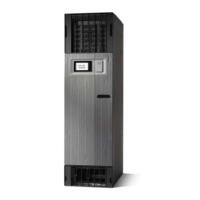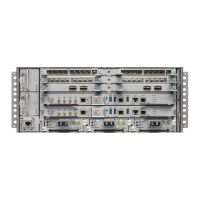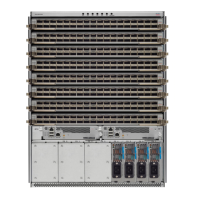Some of the BGP updates are malformed due to wrong formatting of attributes such as the network layer
reachability information (NLRI) or other fields in the update message. These malformed updates, when
received, causes undesirable behavior on the receiving routers. Such undesirable behavior may be encountered
during update message parsing or during re-advertisement of received NLRIs. In such scenarios, its better to
filter these corrupted attributes at the receiving end.
BGP Attribute Filter Actions
The Attribute-filtering is configured by specifying a single or a range of attribute codes and an associated
action. The allowed actions are:
• " Treat-as-withdraw"— The associated IPv4-unicast or MP_REACH NLRIs, if present, are withdrawn
from the neighbor's Adj-RIB-In.
• "Discard Attribute"—The matching attributes alone are discarded and the rest of the Update message is
processed normally.
When a received Update message contains one or more filtered attributes, the configured action is applied on
the message. Optionally, the Update message is also stored to facilitate further debugging and a syslog message
is generated on the console.
When an attribute matches the filter, further processing of the attribute is stopped and the corresponding action
is taken.
Use the attribute-filter group command to enter Attribute-filter group command mode. Use the attribute
command in attribute-filter group command mode to either discard an attribute or treat the update message
as a "Withdraw" action.
BGP VRF Dynamic Route Leaking
The Border Gateway Protocol (BGP) dynamic route leaking feature provides the ability to import routes
between the default-vrf (Global VRF) and any other non-default VRF, to provide connectivity between a
global and a VPN host. The import process installs the Internet route in a VRF table or a VRF route in the
Internet table, providing connectivity.
• Directly connected routes cannot be leaked using BGP VRF Dynamic Route Leaking from default VRF
to non-default VRF
Note
The dynamic route leaking is enabled by:
• Importing from default-VRF to non-default-VRF, using the import from default-vrf route-policy
route-policy-name [advertise-as-vpn] command in VRF address-family configuration mode.
If the advertise-as-vpn option is configured, the paths imported from the default-VRF to the
non-default-VRF are advertised to the PEs as well as to the CEs. If the advertise-as-vpn option is not
configured, the paths imported from the default-VRF to the non-default-VRF are not advertised to the
PE. However, the paths are still advertised to the CEs.
• Importing from non-default-VRF to default VRF, using the export to default-vrf route-policy
route-policy-name command in VRF address-family configuration mode.
Routing Configuration Guide for Cisco NCS 6000 Series Routers, IOS XR Release 6.4.x
45
Implementing BGP
BGP Attribute Filter Actions

